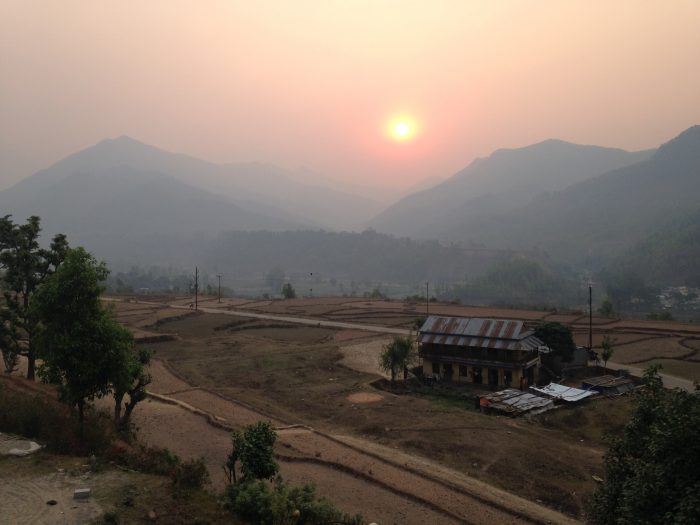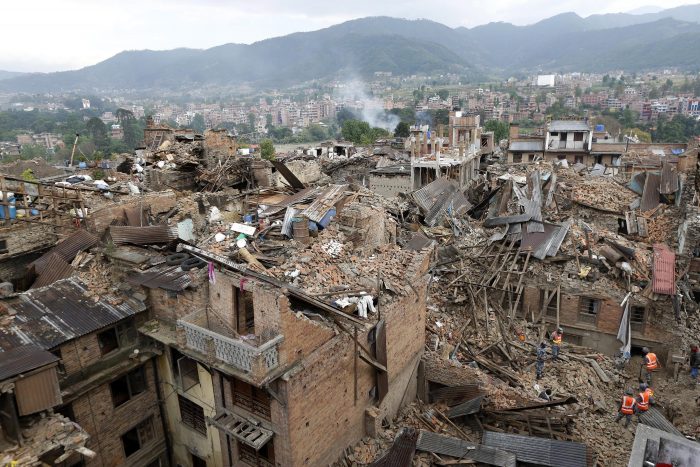Nepal’s Long, Dusty Road to Recovery
Disaster recovery is a long process, and progress in Nepal has been slow with unanticipated stops and turns (such as a border blockade). Donors should remember, however, that it’s the long road—the dirty, dusty road—that often brings you to a beautiful end. It was a little more than two years ago when I was woken […]

Disaster recovery is a long process, and progress in Nepal has been slow with unanticipated stops and turns (such as a border blockade). Donors should remember, however, that it’s the long road—the dirty, dusty road—that often brings you to a beautiful end.

It was a little more than two years ago when I was woken early on a Saturday morning to the incessant buzzing of my cell phone. Half a world away, an enormous earthquake had occurred, leaving thousands without homes and many without family members and friends.
That April 25th earthquake in Nepal, centered in an area between Kathmandu and Pokhara, measured 7.8 on the Richter scale and sent aftershocks across the region, through India, Bangladesh, Tibet and Mount Everest. A second earthquake occurred roughly two weeks later, a 7.3 magnitude event with an epicenter about 50 miles east of Kathmandu.
One year ago, and one year after the earthquakes, I went to Nepal to visit all of the grantees from the Center for Disaster Philanthropy’s Nepal Earthquake Recovery Fund. As I checked into my first hotel, the clerk handed me my room key and said, “I don’t mean to alarm you, but since this is your first time in Nepal, you should know there are earthquake aftershocks every day.”
It was not the most comforting thought to tuck away as I shouldered my backpack and headed up four flights of stairs. Everywhere in Nepal, even a year later, were signs of the earthquake: piles of rubble, halves of buildings, people who told me they hadn’t lived in “their” home since the disaster.
The CDP Nepal Earthquake Recovery Fund awarded four cross-sectoral grants, focused on child protection through direct research and advocacy, safe education spaces, and nutrition to Project Hope, Plan International, All Hands, and Shakti Samuha. All Hands summarized their impact in the “Nepal Earthquake Impact Report: Two Years On.”
Those grants collectively have reached more than 30,000 direct beneficiaries affected by the Nepal earthquakes. Two years later, however, the needs remain great.
For donors still considering work in Nepal, here’s a few things to know:
- Housing remains one of the greatest needs. Most reports on recovery from the earthquakes say that less than one-fifth of the more than 600,000 destroyed homes have been rebuilt. That means many families have moved somewhere new, or possibly separated to try and survive.
- Livelihoods and employment boosts are crucial to long-term success. A lack of jobs has pushed thousands to migrate – often the men in a family, but sometimes the women. Separated families leaves children and adolescents more vulnerable to exploitation. Human trafficking, both for labor and sex, saw a spike after the earthquake, and border authorities and non-governmental organizations continue to report high numbers of women, girls, and children picked up at transit points as suspected trafficking victims.
- Water and sanitation needs are significant. Many of the water sources in Nepal are contaminated and unsafe to drink. This was true before the earthquakes, however the 2015 disaster worsened the situation, rerouting or damaging many existing natural springs and water sources.
Disaster recovery is a long process, and progress in Nepal has been slow with unanticipated stops and turns (such as a border blockade). Donors should remember, however, that it’s the long road—the dirty, dusty road—that often brings you to a beautiful end. In Nepal, that truth is quite literal.
More like this

Providing Hope for Nepal’s Children

